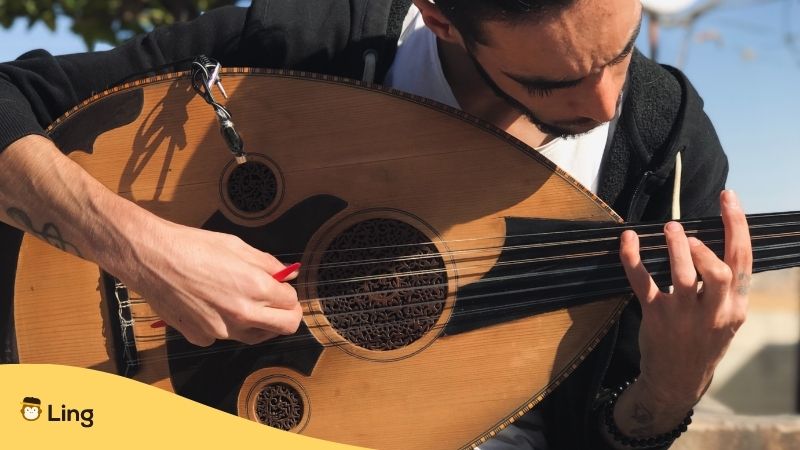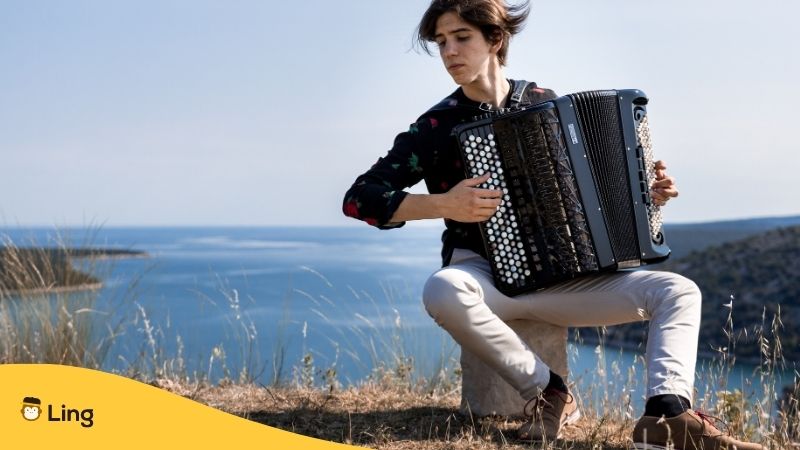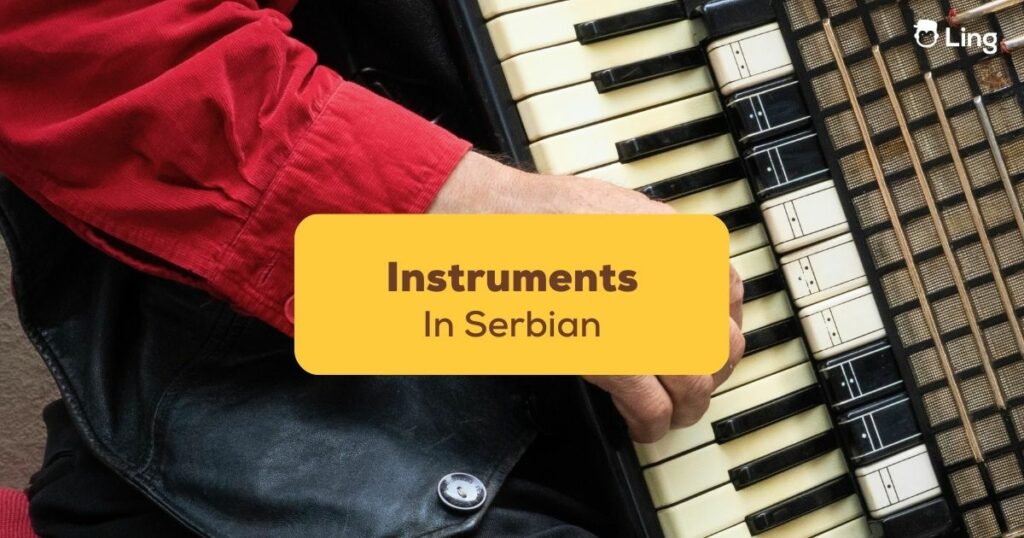Through the centuries, various civilizations and influences have shaped melodious instruments in Serbian culture, resulting in a remarkable array of traditional musical instruments still played throughout the tiny nation today.
As a landlocked country slap bang in the center of Europe, Serbia has long been a crossroads for neighboring countries. It is, therefore, inevitable that all manner of musical instruments from around Europe and beyond have passed through Serbia over the centuries. From folk tunes played at lively gatherings to classical compositions, Serbian music holds a special place in the hearts of its people. So, without further ado, let’s jump into the symphonic world of Serbian musical instruments.
The Tamburica Family
The Tamburica family of instruments takes center stage in Serbian music. A plucked string instrument derived from the lute family, these instruments are known for their distinctive pear-shaped bodies, long necks, and resonant sound. The tamburica family includes several members, each with its own tonal qualities and playing techniques.
Prim
The smallest member of the tamburica family, the prim, is tuned the highest. Its bright and sharp tones add sparkle to the melodies, often providing the leading voice in folk ensembles.
Brač
With a slightly larger body, the brač possesses a warmer and more mellow sound than the prim. It plays a complementary role in the ensemble, providing harmonies and adding depth to the overall sound.
Čelo
The Čelo, also called the bugarija, features a larger body and lower pitch. This traditional instrument provides the rhythmic foundation for the ensemble, delivering a rich and resonant bass sound.
Tambur
The largest and deepest-toned instrument in the tamburica family, the tambur has a powerful sound that adds a robust and resonating bass line. It plays a fundamental role in anchoring the ensemble’s harmony.

The Gusle
The gusle, an ancient single-stringed musical instrument, holds a special place in Serbian traditional music. Resembling a small violin, the gusle is played with a bow and is often associated with epic poetry, epic songs, and epic storytelling. The Serbian musician known as a guslar skillfully plays the instrument, with its one horsehair string, while reciting heroic tales and historical narratives, captivating audiences with both the music and the lyrical content.
The gusle’s haunting and melancholic sound evokes deep emotions, reflecting the hardships, triumphs, and legends of the Serbian people. Its raw and expressive tones have the power to transport listeners to another time, invoking a sense of nostalgia and national identity.
The Kaval
The kaval, a wooden flute-like wind instrument, has its roots in the Balkans and is widely played in Serbian traditional music. Made from a single piece of wood, the kaval features finger holes and produces a hauntingly beautiful sound. It is often associated with shepherds, who used it to pass the time while tending to their flocks.
The kaval’s distinct timbre allows for a wide range of melodic expressions. Skilled players can produce both delicate and powerful tones, creating melodies that evoke the natural beauty of the Serbian countryside. It is a versatile instrument that can be played solo or in ensemble settings, complementing other instruments with its unique voice.
The Frula
A medium-sized flute with a mouthpiece used for blowing air inside. The double frula consists of two connected instruments made out of a single piece of wood. Traditionally, the frula was played by farmers and shepherds while they watched over their flocks. Today the instrument is a popular feature in Serbian folk songs, often accompanied by large traditional drums.

The Accordion
Introduced to Serbia in the late 19th century, the accordion quickly found its place in Serbian folk music and has been a favorite throughout the country since World War I. Its versatility and expressive capabilities made it a popular choice, particularly in village celebrations and social gatherings. The accordion’s ability to produce both melodic and harmonic elements contributed to its widespread adoption.
Serbian accordionists developed a distinct playing style, while still being influenced by Turkish and Western music, characterized by virtuosic fingerwork and intricate rhythmic patterns. The instrument became an integral part of Serbian folk orchestras, providing a full and rich sound that accompanies lively dance tunes and heartfelt ballads.
The Legacy Of Traditional Instruments In Serbian Music
These popular instruments have played an essential role in preserving and passing down Serbian traditions from one generation to the next. Today, they continue to captivate audiences at folk dances and Serbia’s biggest music festivals with their distinct tones and evoke a sense of national identity. The sound of traditional folk music continues to influence pop music and turbo folk. It can be heard at jamborees such as the EXIT Festival, a European festival held in Novi Sad that was voted the best major European festival at the 2013 EU Festival Awards.
Exploring the instruments of Serbia is not just an examination of musical traditions; it is an invitation to delve into the rich intangible cultural heritage of a nation. By embracing and celebrating these instruments, we honor the past and ensure their continued legacy in popular music for future generations to appreciate and cherish.
Some Essential Serbian Music Vocabulary
| English | Serbian | Pronunciation |
| Gusle – Traditional bowed string instrument | Гусле | Gusle |
| Tambura – Long-necked fretted string instrument | Тамбура | Tambura |
| Kolo – Traditional circle dance | Коло | Kolo |
| Frulа – Traditional end-blown flute | Фрула | Frulа |
| Folk music | Фолк | Folk |
| Rock music | Рок | Rock |
| Pop music | Поп | Pop |
| Jazz music | Џез | Jazz |
| Concert | Концерт | Kontsert |
| Opening act | Предгрупа | Predgrupa |
| Main act | Главна група | Glavna grupa |
| Stage | Бина | Bina |
| Microphone | Микрофон | Mikrofon |
| Loudspeaker | Звучник | Zvučnik |
| Sound | Звук | Zvuk |
Grab Your Lute, Ling App, And Learn Serbian
Want to learn more sweet-sounding Serbian? Everything you need to become fluent is available through Ling app. With lessons to learn at your own pace, as well as fun games and quizzes, click on Google Play or the App Store and start your Serbian adventure today.



































































